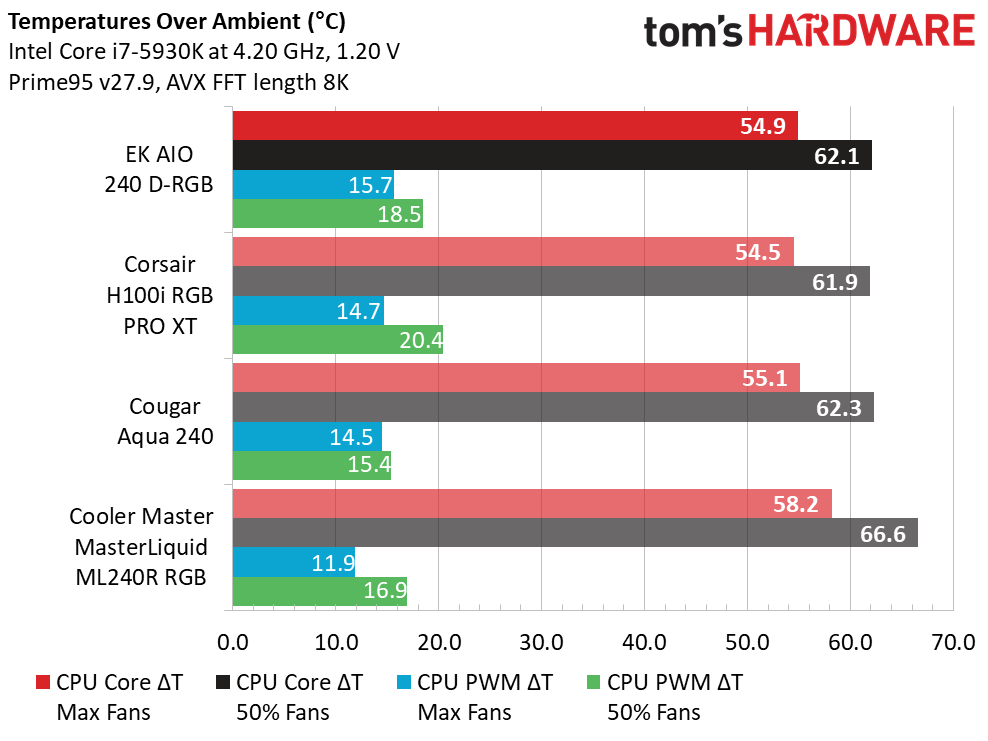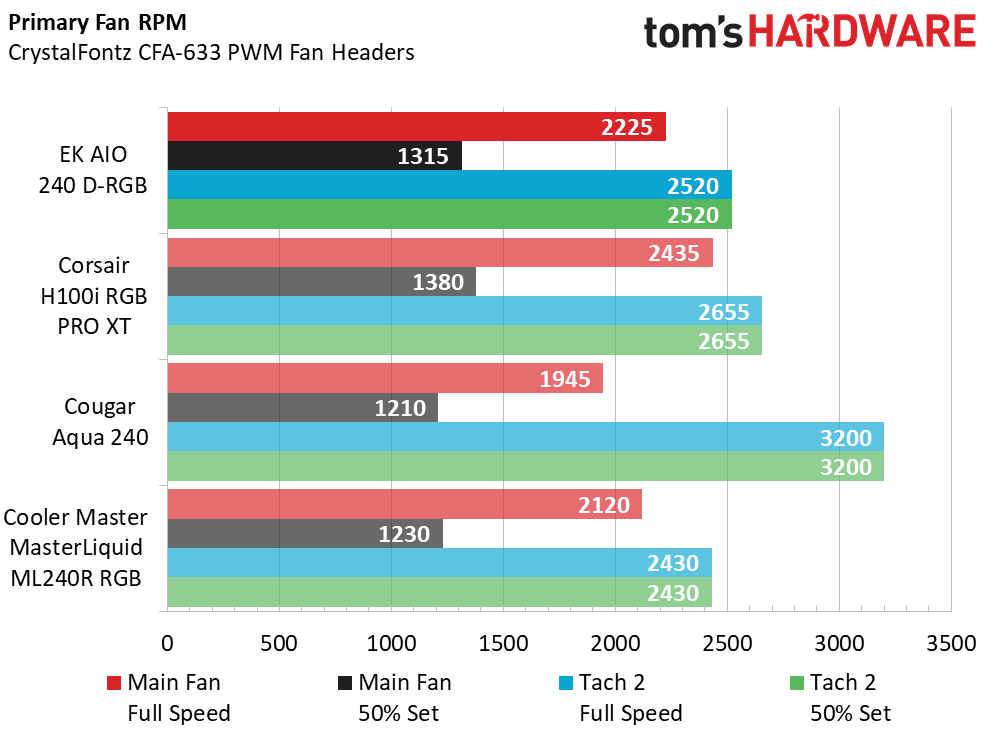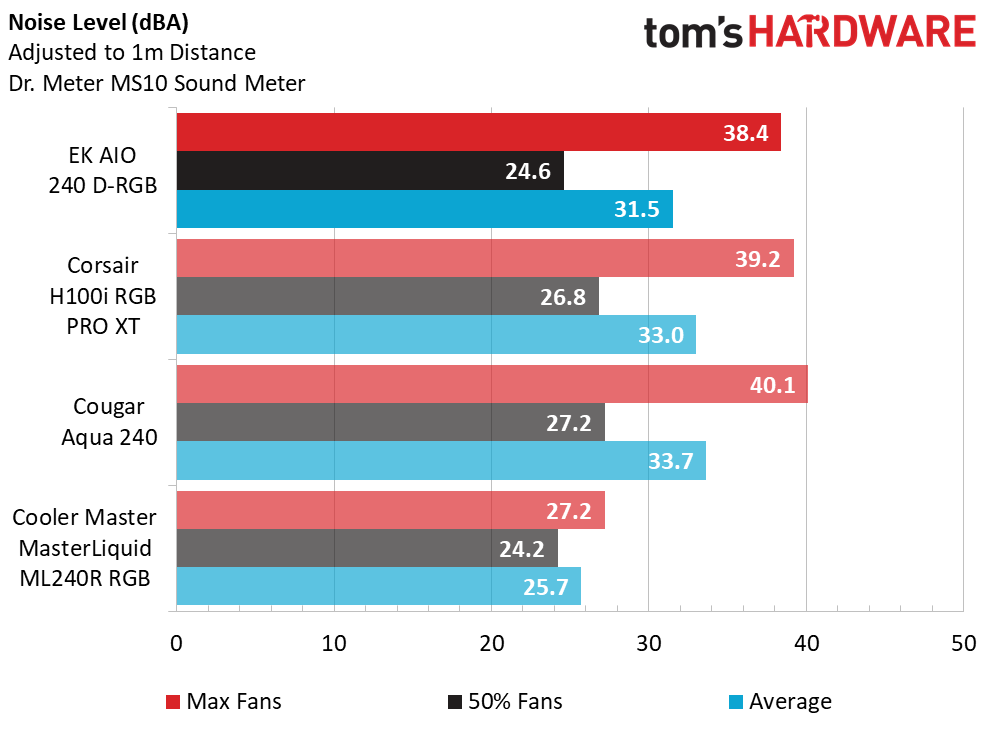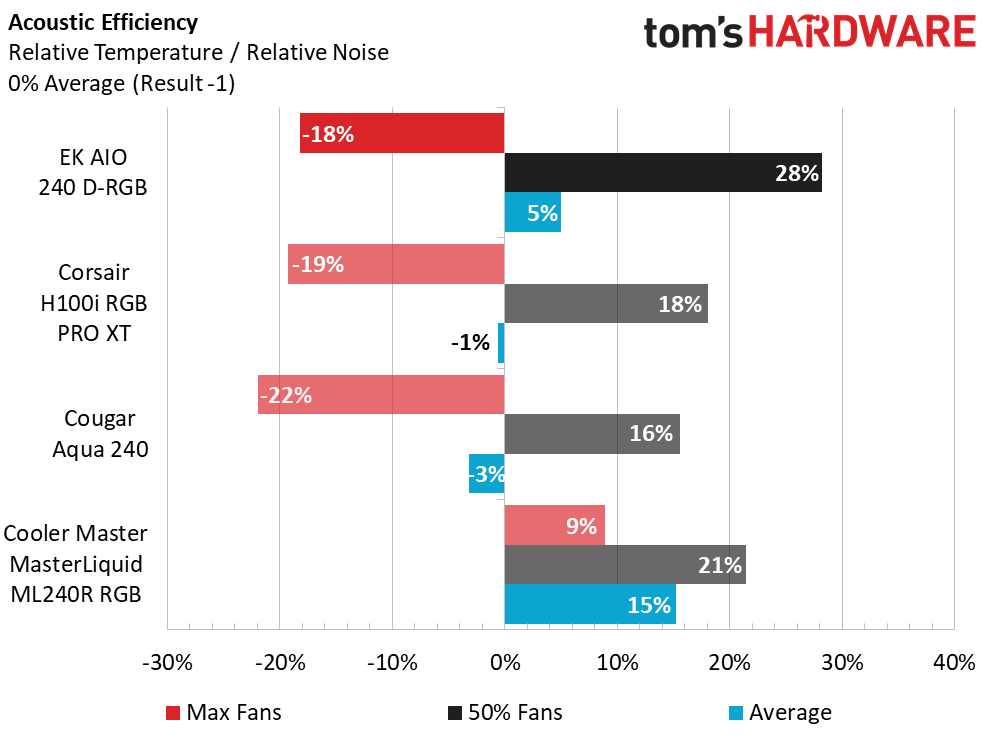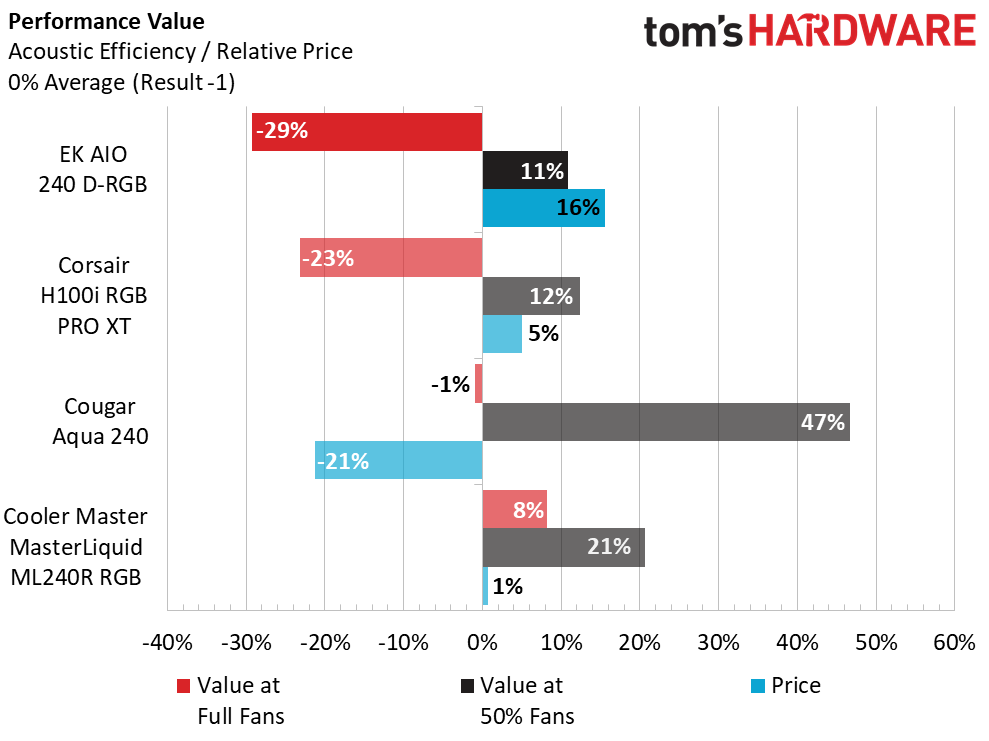Why you can trust Tom's Hardware
We can evaluate the EK AIO 240 D-RGB from the data collected from our Intel i7-5930K test system running at 4.20 Ghz @ 1.20v on an MSI X99S XPower AC board with 16GB of Crucial Ballistix DDR4-2400 memory, all housed in a Corsair Graphite 760T chassis, all powered by a be quiet! 1200 Dark Power PRO.
We’ll look at how it compares against some other notable 240mm AIO coolers we use for high-end thermal comparisons in this product segment.
Benchmark Results
The EK AIO 240 D-RGB runs neck and neck with some of the best 240mm coolers we’ve tested, staying within 1 degree Celsius of both the Corsair H100i RGB PRO XT and Cougar Aqua 240. Thermal load performance across the testing group is within single-digit percentage differences.
Comparing fan RPMs gives us clear indication that we’re looking at performance-focused coolers that aren’t afraid to make use high-airflow volume to achieve results. This often comes at a cost of elevated noise levels while fans operate at full speed.
Not to say we told you so, but... well, we told you so. Ideally, system builders will make use of motherboard BIOS fan curves, dedicated software UI performance settings or a fan controller to manage fan speed and decibel levels when 100% performance isn’t needed. Or maybe you don't mind constant fan noise.
With thermal load performance differences so closely grouped, small differences in registered dBA does make the chart jump about a bit, favoring those with slightly lower volume levels.
Priced at $132 at launch, the EK AIO 240 D-RGB is the most expensive of the testing group, giving it a disadvantage when evaluating price on top of our acoustic efficiency chart. However, performance and value mean different things to different people, making strong differing arguments for all four cooling solutions, depending on utilization, user knowledge and ultimately, what CPU will be cooled.
Get Tom's Hardware's best news and in-depth reviews, straight to your inbox.
Thermal imaging from our FLIR ONE Pro camera shows some noticeable heat blooms throughout the radiator and coolant tubing, especially at lower fan speeds where airflow is diminished. We also see a notable difference in heat soak on the pump top itself between both images. As expected, fan hubs show increased thermals at full RPM from power usage and friction, while at the same time the fan chassis registers cooler from the increase in airflow.
The EK AIO 240 D-RGB looks and feels like a luxury or premium liquid cooler when compared to most, which is also echoed by the elevated price point. The lack of software control out of the box (without purchasing another $60 EK box) is likely going to be a major dissuasion point for many users, especially those who may be less comfortable setting fan curves. But for those ready and willing to dive into their BIOS and who don't want to fiddle with extra software or hardware, this could be a selling point.
Cooling performance and appearance really drive the purpose of this liquid cooling solution, making it a solid choice, particularly for those looking to add some of EKWB’s hardware to their build, without the cost or complications typical of custom-cooling setup.

Garrett Carver is a contributor for Tom’s Hardware, primarily covering thermal compound comparisons and CPU cooling reviews; both air and liquid, including multiple variations of each.
-
LmaoWow1 EKWB sure is a special company to try to make their crappy fan controller required for an AIO. $190 for their AIO & controller can equivalently get a high quality nickel+copper water cooling kit from China for your entire system meaning water cooling GPU too. Then again, everyone knows how much their QC for custom loops has fallen lately and you buy EK for aesthetics or don't know any better.Reply -
rubix_1011 It honestly feels very well built compared to other AIOs; it has more mass to the CPU block and pump unit than most, although likely due to the acrylic components used for the top (rather than lightweight plastic).Reply
The reason I didn't rate it higher was the lack of software for control (like iCUE or CAM does) as part of the cooler's included features. It also was listed a bit higher on the EK site as part of a pre-order, so originally it showed $132 vs an initial $119 release price, back up to the $146 it apparently shows today.
For price and performance, you could get a Corsair H100i RGB PRO XT that comes WITH software controls for nearly $20 less.
The EK does look far better, aesthetically though, but it is difficult to recommend it as much as the Corsair when all it does is look prettier while the Corsair is the cheaper, equal-performing alternative and provides a full software suite. -
brodzik Please do not buy EK Loop Connect, this software is in beta stage, crashing constantly which means it won't control your fans and can damage your computer. There are already cases when the software crashed and water temperature raised so much that the entire system leaked water directly onto users 2080ti! Not only that but half of the functions does not work in EK Loop connect software, stay away, you've been warnedReply
